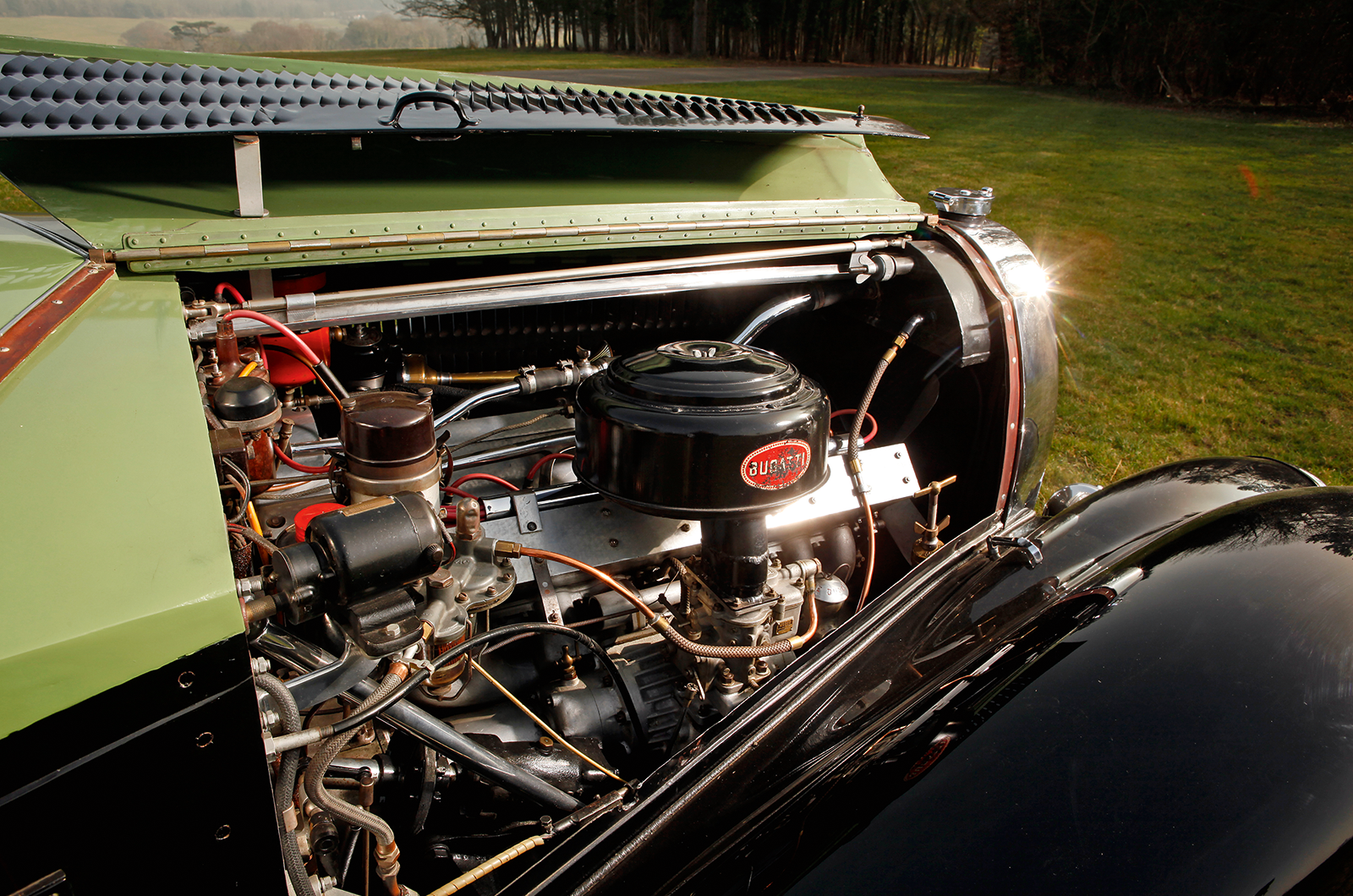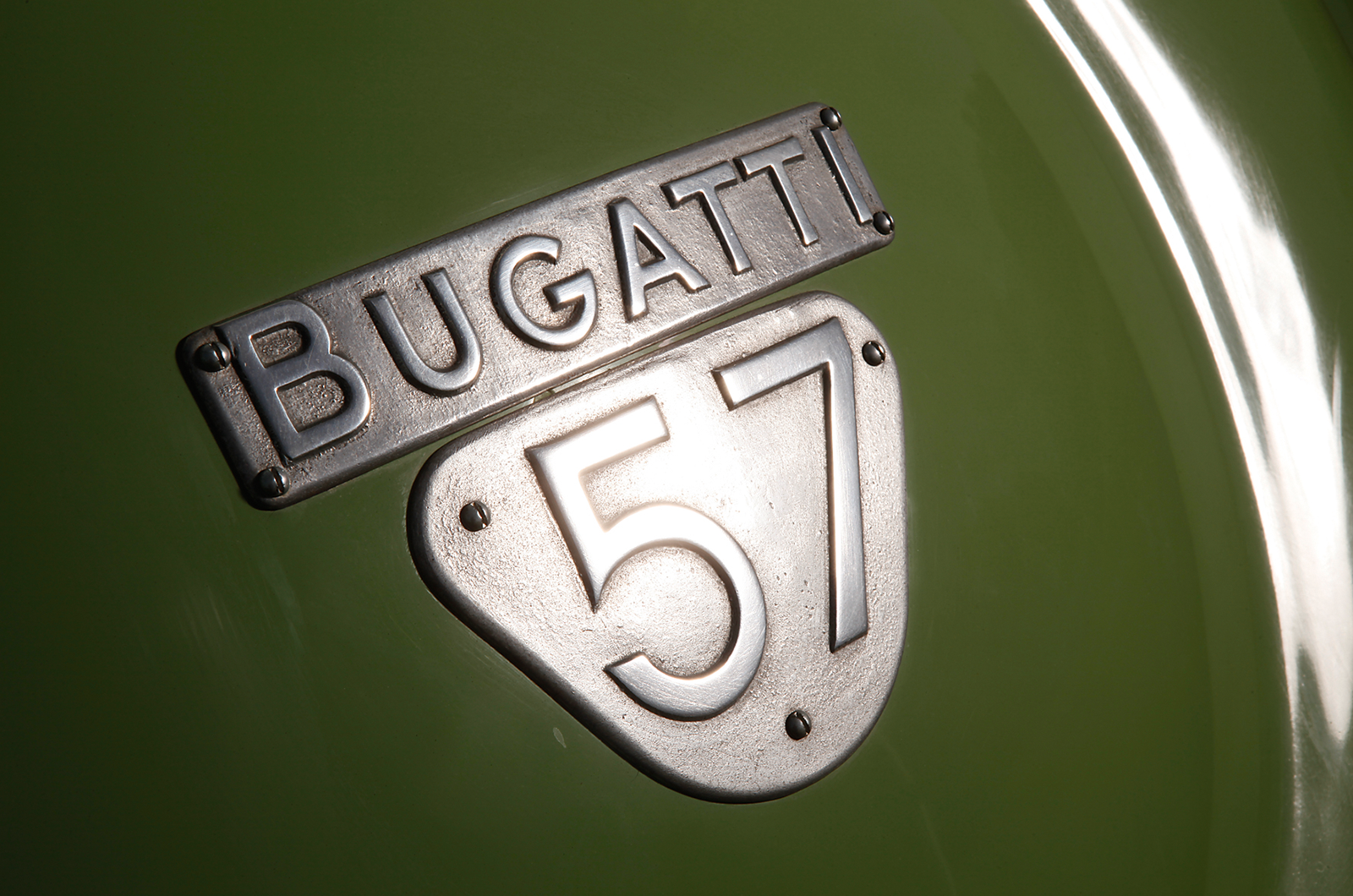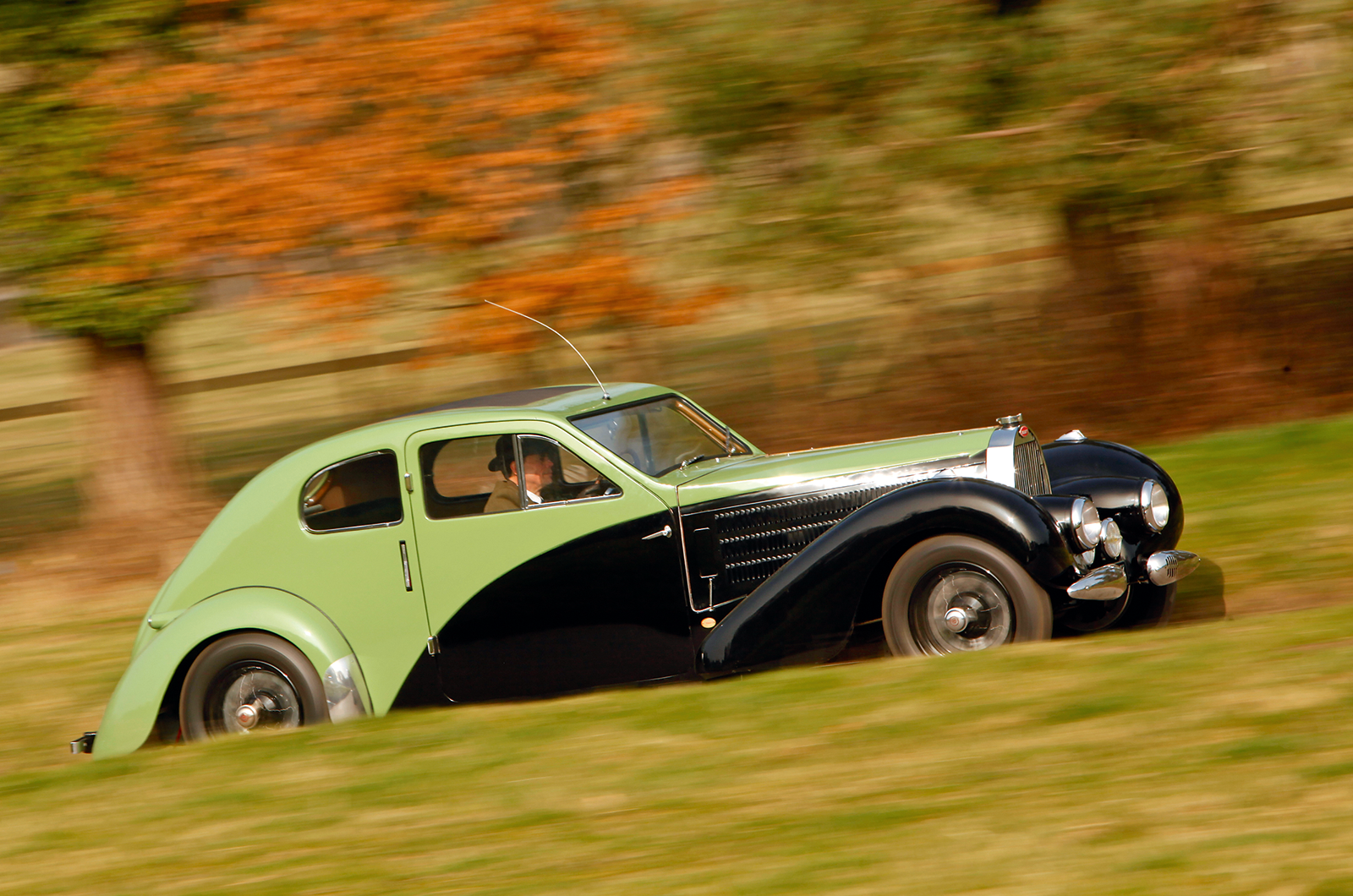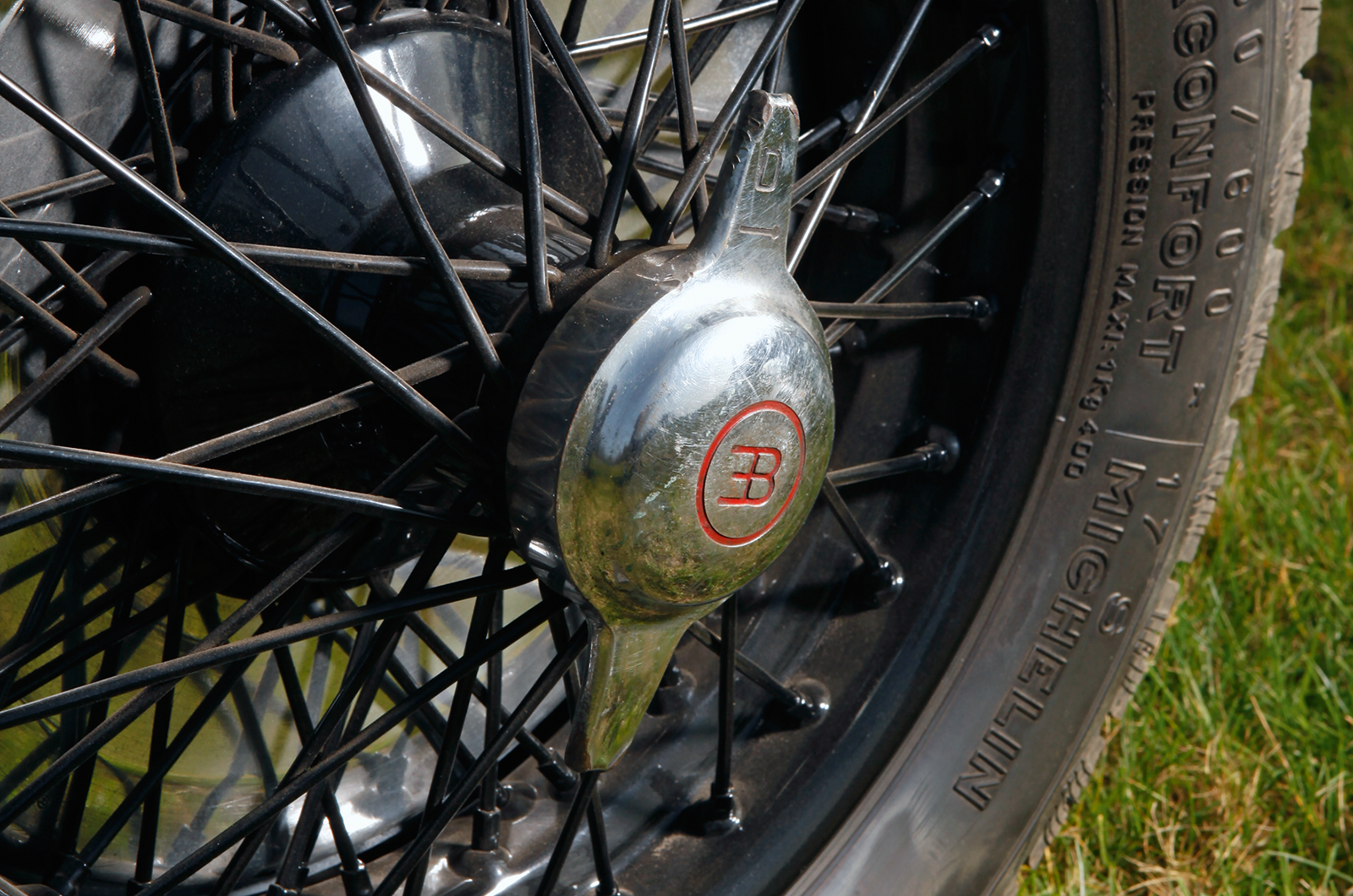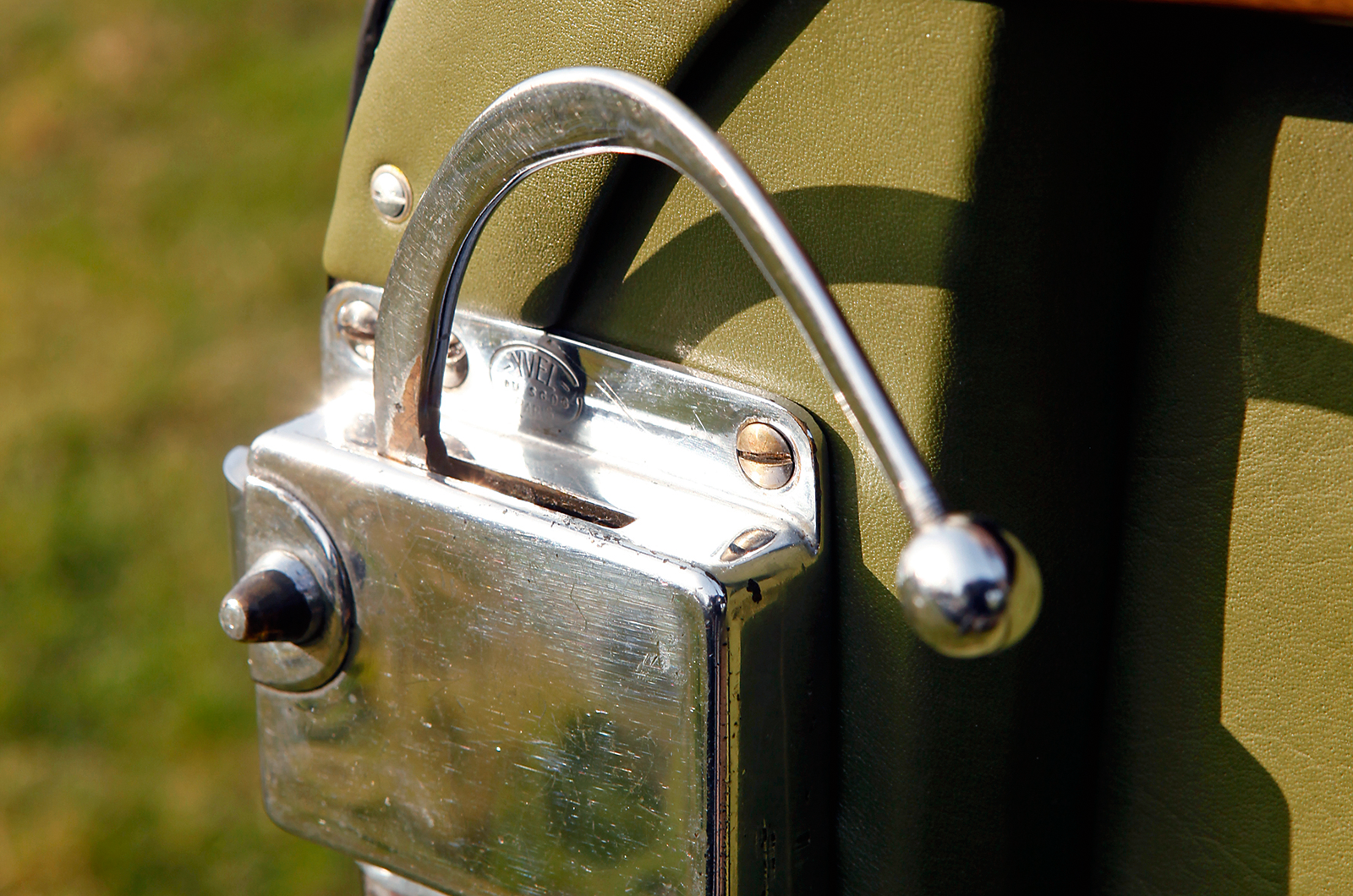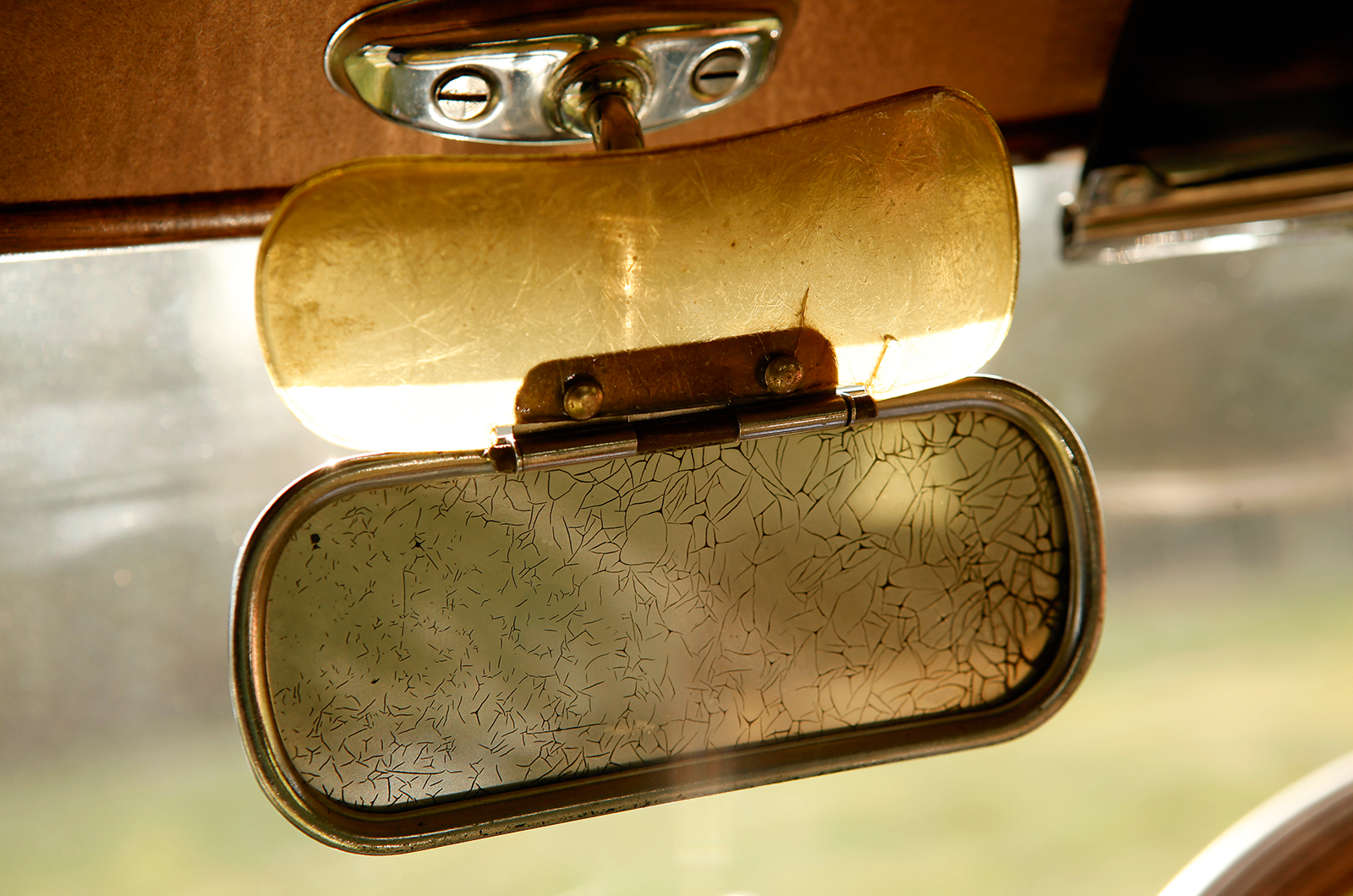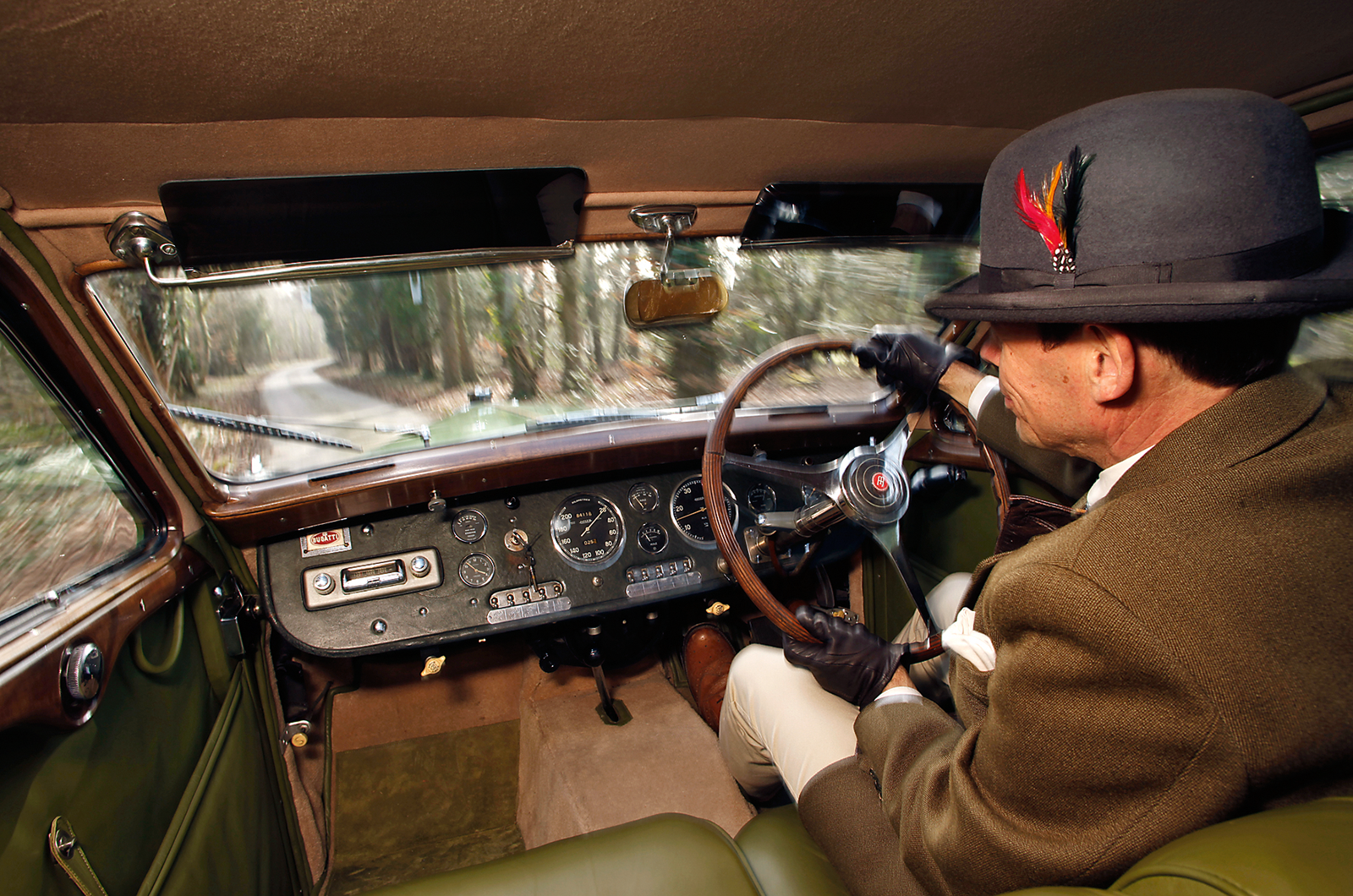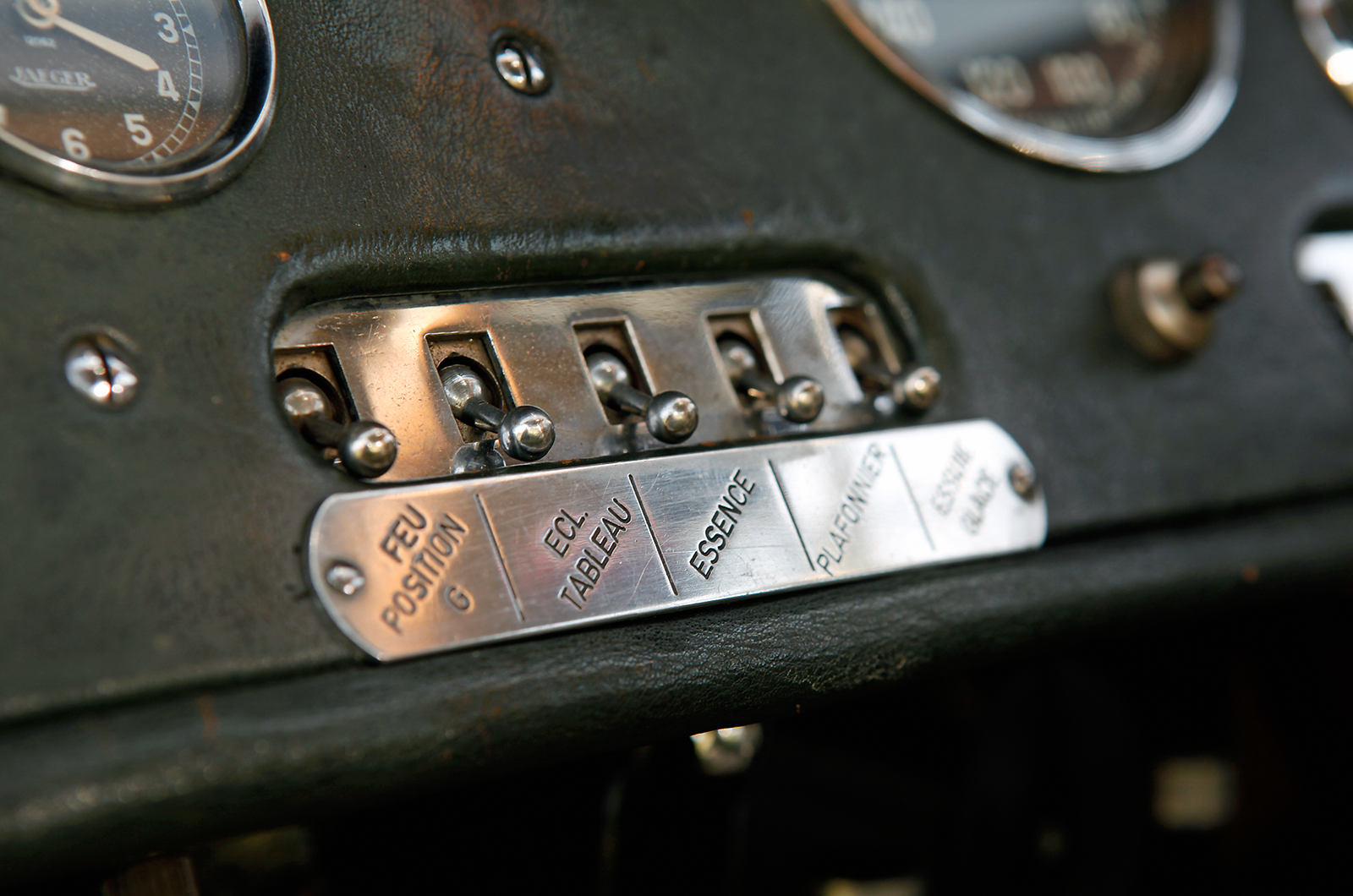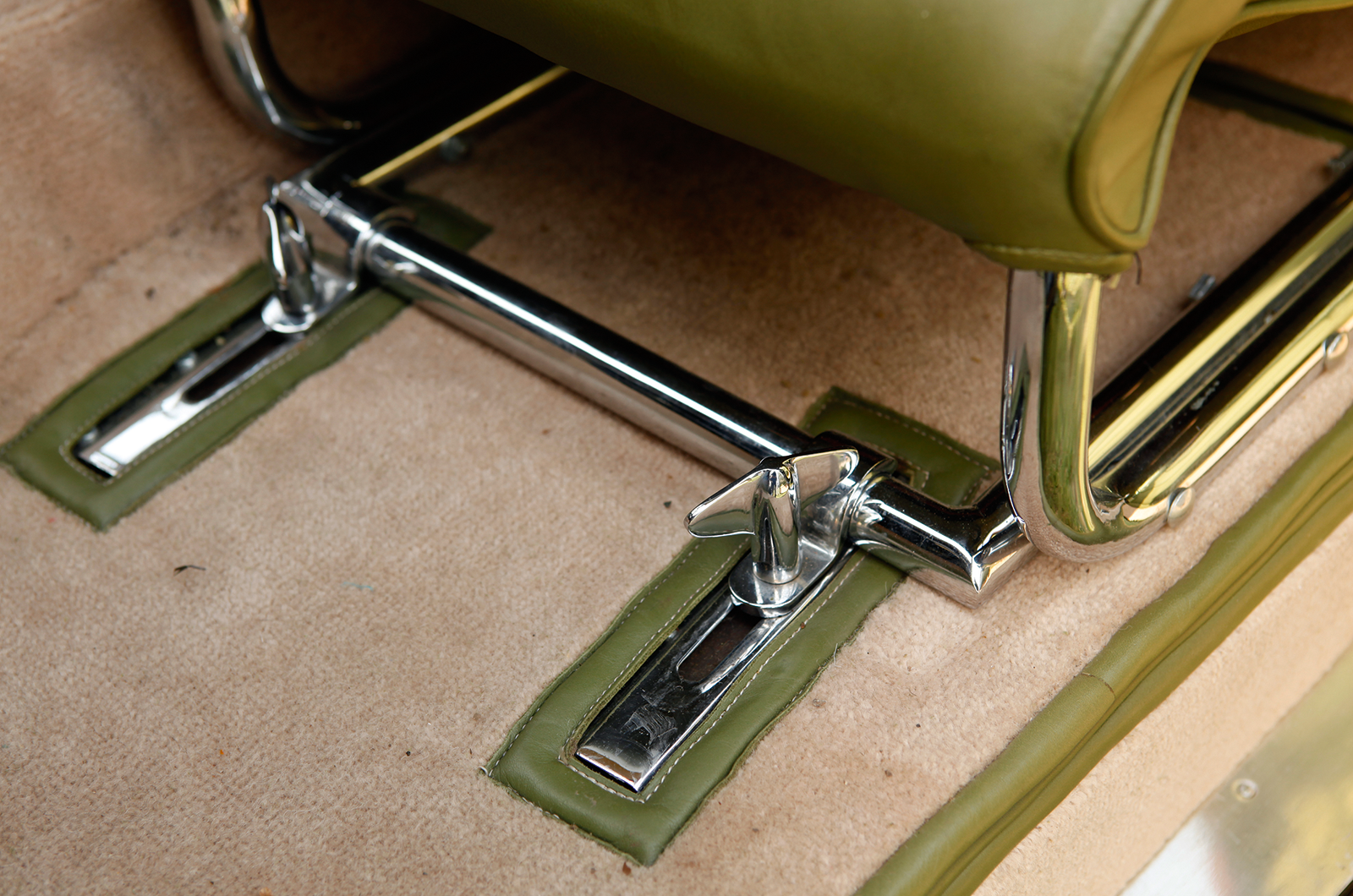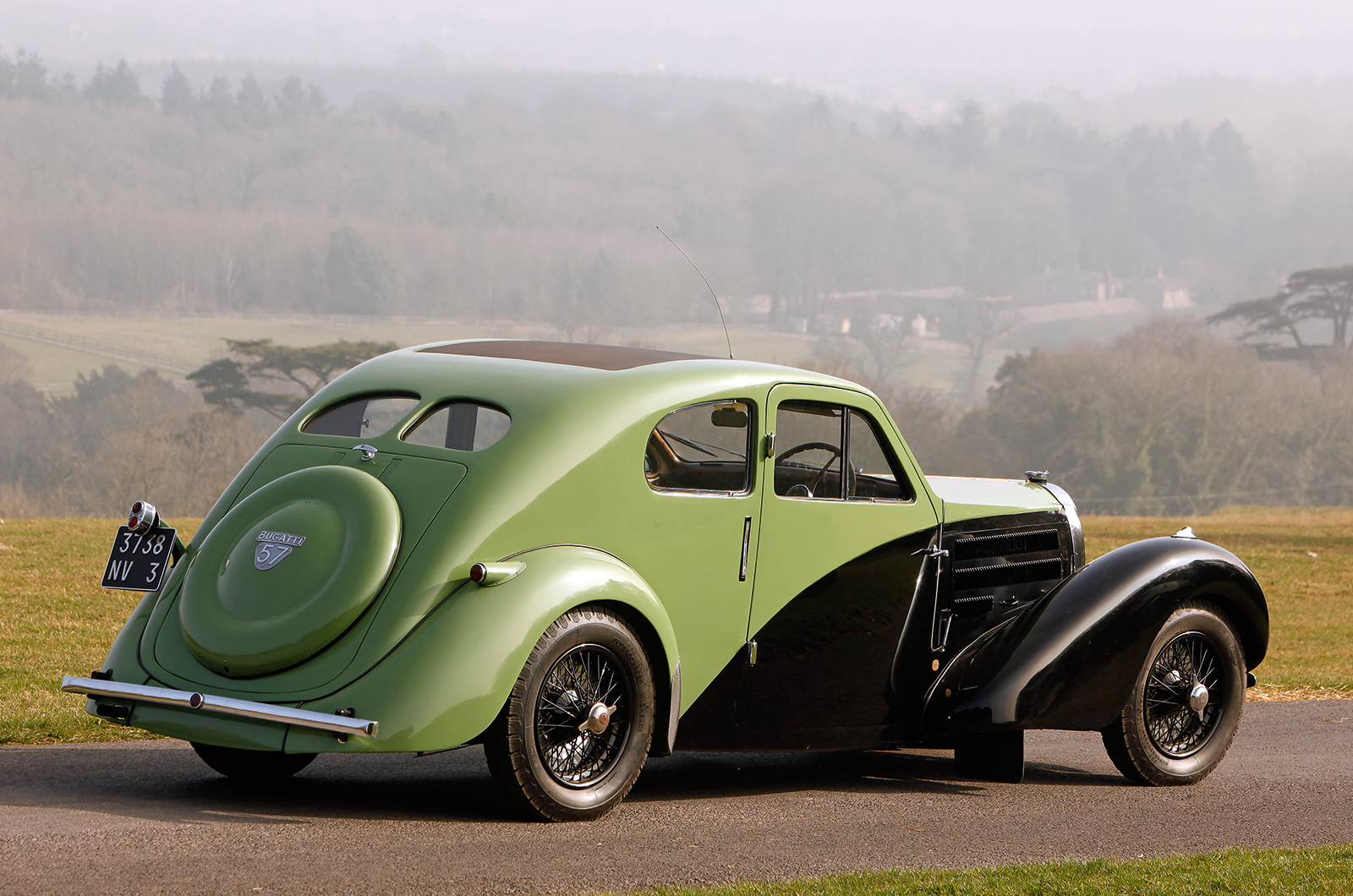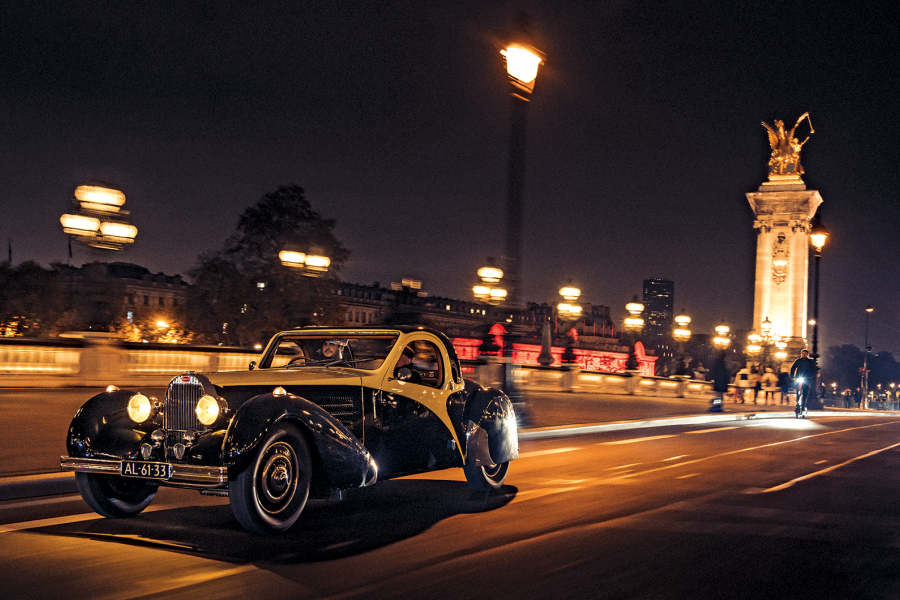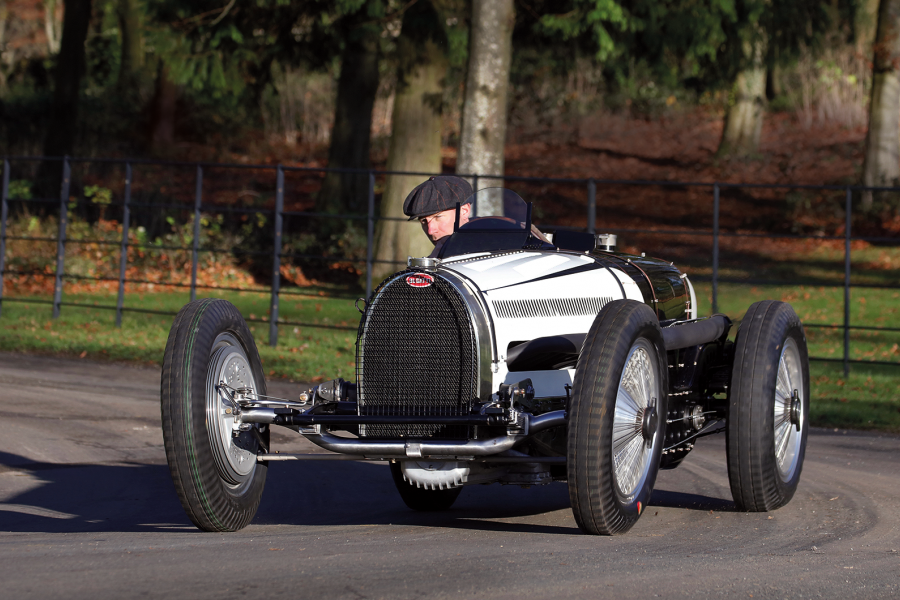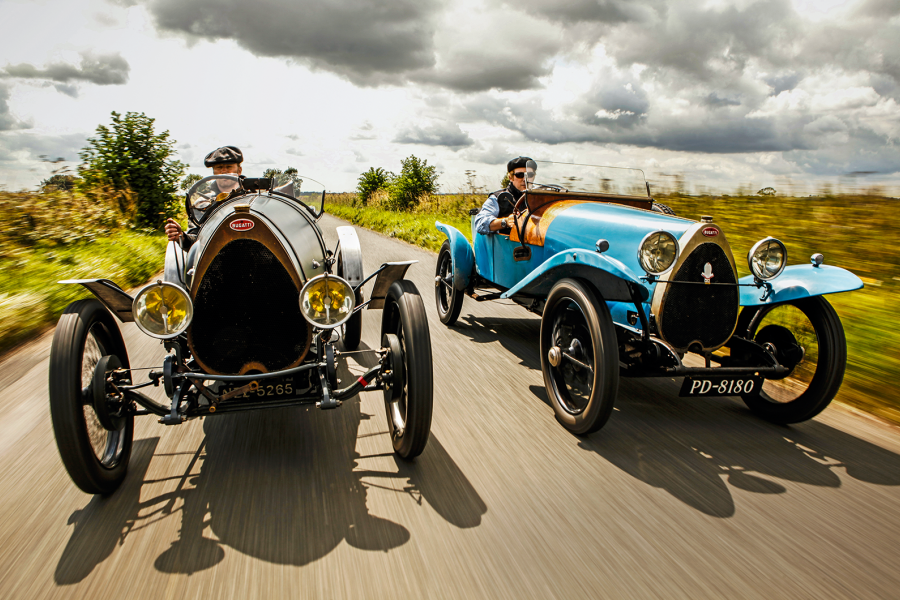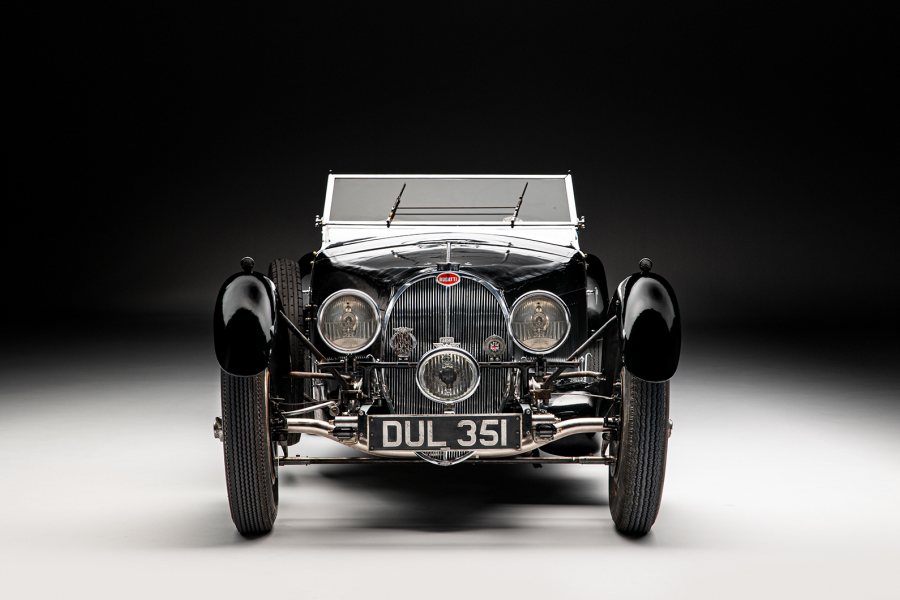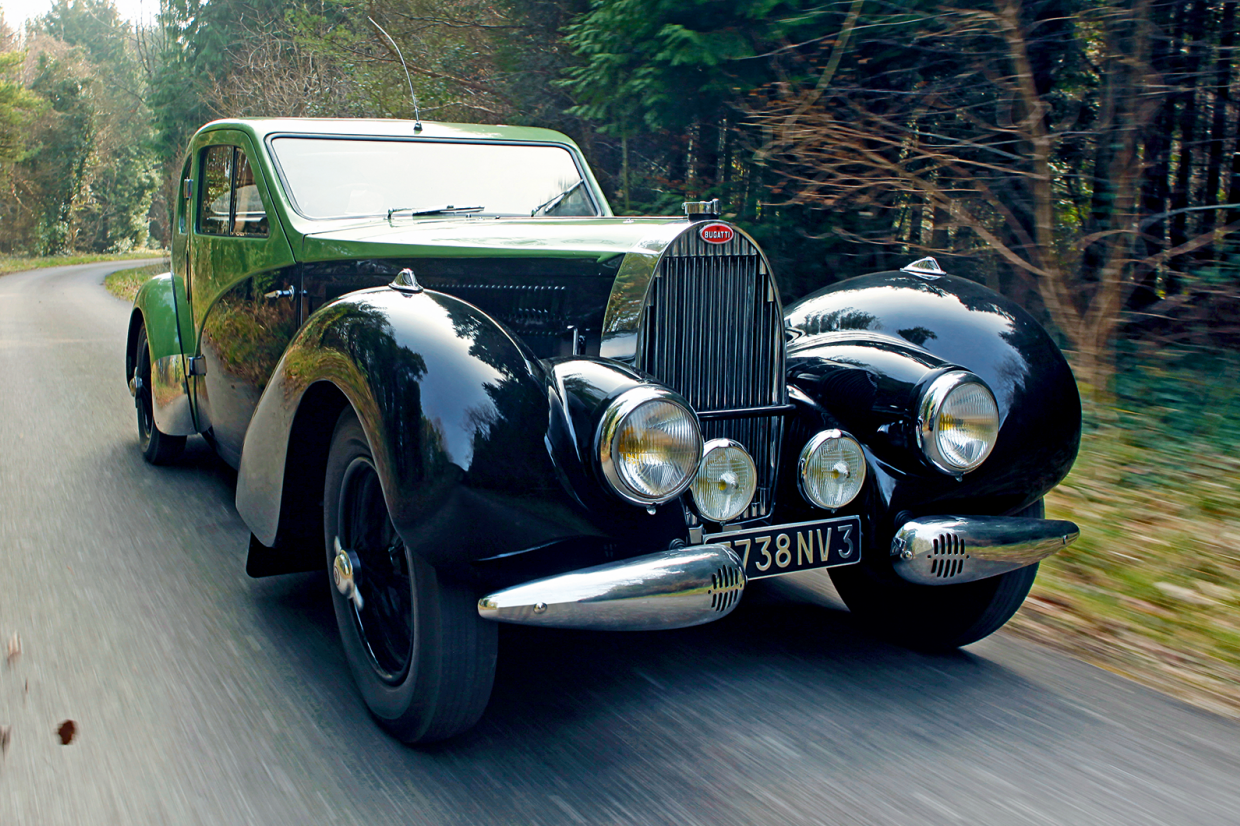
Few cars are directly connected to Ettore Bugatti.
Always a spirited driver, the great man would no doubt take one from the Molsheim factory to test rather than own a specific model.
I’m sure Vittorio Jano, Marc Birkigt and Ferry Porsche operated in the same way.
From his early years as a designer, Ettore enthusiastically raced his own designs, starting with cars built for de Dietrich, Deutz, Mathis and Isotta-Fraschini.
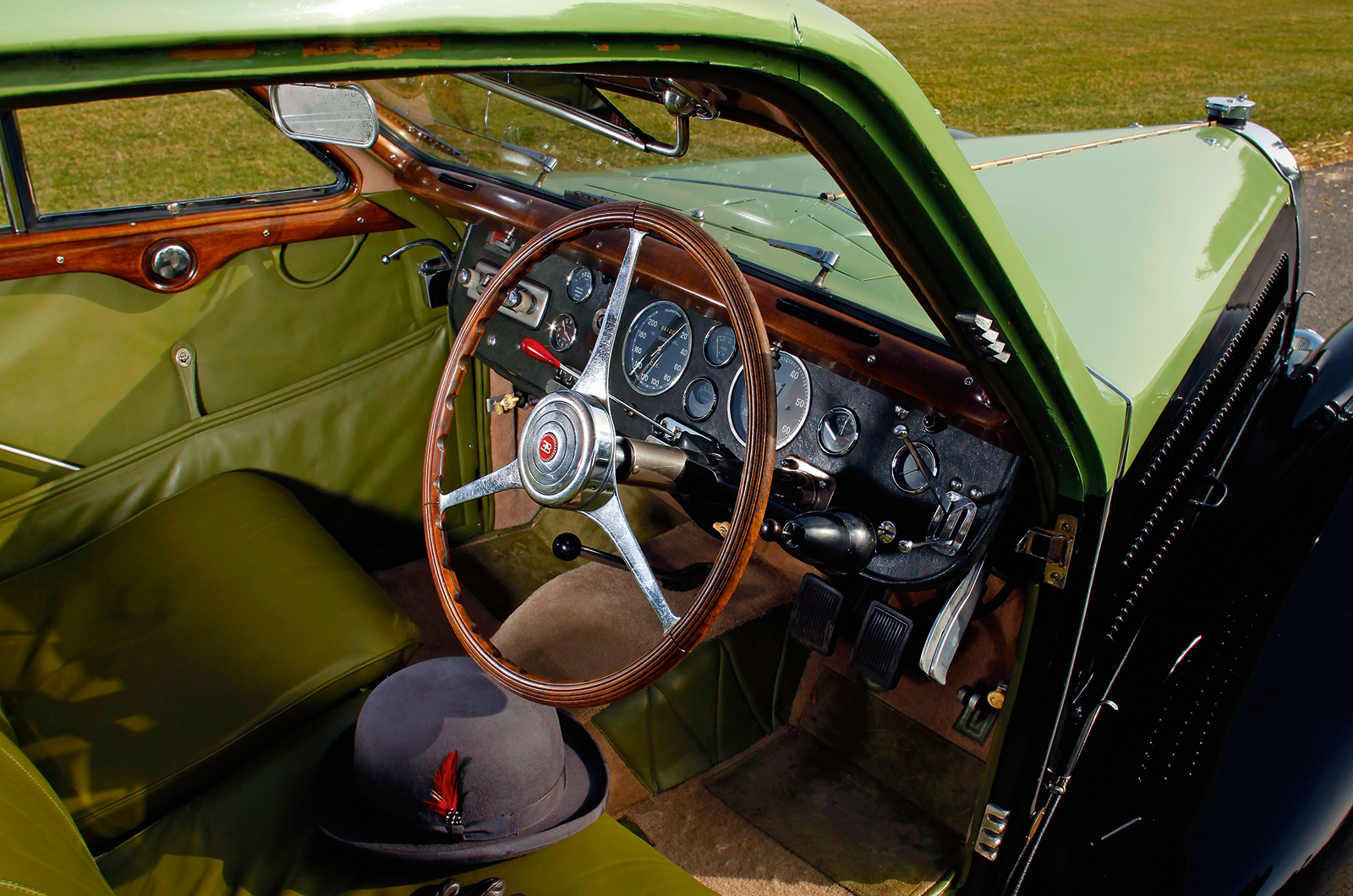
This Bugatti Type 57C’s cabin is roomy but toasty, thanks in part to the fixed windows
The most famous of EB’s own machines was the chain-drive 5-litre Type 18, which even carried a monogrammed suitcase between the front dumb irons of its chassis.
Once he’d stepped back from competing, though, Bugatti was rarely linked to driving one particular car.
That said, he famously crashed the Royale prototype after he fell asleep on a road trip.
The chassis of the huge 12.7-litre Type 41 was badly bent but was rebuilt and fitted with the Coupé Napoleon body, which is now the star of the National Motor Museum of France in Mulhouse.
Horses became Bugatti’s passion during the ’30s.

